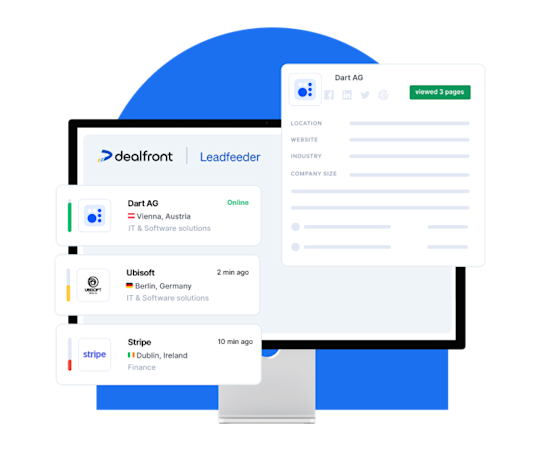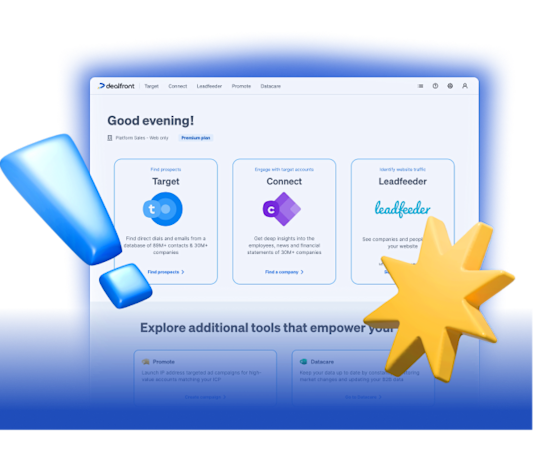60-Second Summary
Mastering B2B sales requires more than great products—it’s about strategy, relationships, and smart processes that guide potential clients from cold lead to loyal customer. This guide breaks down the essentials of B2B selling, from the extended sales cycle to building trust and aligning sales and marketing.
Key insight: Strong relationships and trust are essential in B2B sales, especially when multiple stakeholders and long cycles are involved.
Standout tactic: Use Account-Based Sales (ABS) to focus on high-value targets with personalized pitches aligned with marketing insights.
Framework: Follow a 7-step B2B sales funnel—starting with prospecting and ending with post-sale customer care—to reliably move leads through the pipeline.
Real-world lesson: Equip your team with active listening, adaptability, and ongoing training to thrive in an evolving B2B sales landscape.
But, with so much of the world relying on B2B sales solutions, how can you mae your business stand out from the crowd? In this post, we’re going to look into how you can build strong relationships and turn leads into paying customers with a winning B2B sales strategy. Let’s dig in!
What is B2B sales?
B2B means business-to-business and covers companies that provide products or services to other organizations rather than individual consumers. Therefore, a B2B sales definition would be the process involved in one company selling its product to their client company.
B2B sales normally involve a longer sales cycle, strong relationships, and higher order values.
Key concepts of B2B sales
Building trust: Building strong relationships is vital in any buyer-salesperson relationship. Cultivating trust and rapport is the foundation for long-term partnerships, so you need to nail effective communication and understand the unique needs of every business you want to work with.
This is particularly important for B2B sales, as they normally involve multiple stakeholders and expert buyers. You will need to get all the stakeholders of a client on board with your solution and convince them of the usefulness of your solution or product.
Demonstrating value: It is vital that B2B offerings provide value and solve client problems. B2B buyers are often looking for solutions that can enhance their operations or address specific challenges they face.
Demonstrating how your product or service can meet these needs and deliver tangible benefits is a cornerstone of successful B2B sales. This involves showcasing how your offering can improve efficiency, reduce costs, and/or increase revenue for the buyer's business.
Navigating long sales cycles: The B2B sales funnel is a long one, with the higher costs of products and multiple stakeholders involved in B2B sales, meaning that there are numerous steps to navigate.
Be prepared to settle in for the long haul and use our seven-step guide to successfully guide your prospects through the B2B sales pipeline.
B2B sales vs B2C sales: What’s the difference?
Business-to-consumer, or B2C, is when businesses sell to individual customers. In B2C, companies are focused on what the consumer wants; in B2B, companies want to show buyers how they can help their business.
That’s why B2B sales often involve longer processes and building relationships since businesses make bigger decisions. Consumer-oriented sales, on the other hand, are usually quicker and focus on appealing to personal wants and needs.
Communication styles vary, too. B2B communication is more detailed because B2B companies need to make informed choices. But when you’re selling directly to consumers, communication is more emotional, aiming to connect with personal desires.
The goals of B2B and B2C sales are unique. B2B aims for lasting partnerships and solving business challenges. B2C wants to satisfy individual customers. Even the sales cycles are different. In this post, we'll focus on the B2B cycle.
The two main B2B sales examples
Some examples of B2B sales services include:
Suppliers, producers, and distributors: Suppliers and producers supply raw materials to businesses, while distributors provide completed products. Some businesses that would fall into this category would include heavy machinery manufacturers or companies that specialize in office supplies.
Software and service providers: Rather than selling materials or products, these providers offer specific services and solutions. Businesses that fall into this category include providers of legal, marketing, and accounting services, software developers, and consultants that offer specialized training courses.
Understanding the B2B sales pipeline
The B2B sales cycle is like steps in a dance between two companies. First, you find potential customers who need your product. Then, you talk with them to learn what they need. Next, you demonstrate how your product helps their business.
After that, you negotiate the deal and agree on the price. Once they say yes, you seal the deal. But it doesn’t end there, because you need to keep nurturing them after they’ve signed the deal. Keep in mind that the average B2B sales cycle can take 4 to 8 months.
Understanding this longer sales cycle helps you know where you are and what comes next in the B2B sales process. But before you find B2B companies to sell to, you need to start somewhere.
B2B sales channels
There are different ways to find B2B customers. Say you’re looking for a go-to-market strategy for a new product. One way is through direct sales, where your team talks directly to ideal customers through cold calling. Another way is using third parties like distributors or wholesalers who buy from you and then sell to the customers.
Online stores and marketplaces are also channels where customers can find and buy your stuff.
Other B2B sales channels include:
Social media
Email marketing
Trade shows
Conferences
Referrals
Salespeople
Choosing the right channels depends on who your customers are and how they like to buy things. But it’s not enough to know where to sell from. First, you need to master all the B2B sales process steps.
The B2B sales process: The seven essential steps
Mastering the B2B sales process is like having a roadmap for your sales journey. You wouldn't set off on a road trip without knowing where you're going. In the same way, having a clear grasp of the B2B sales stages is essential for a successful conversion journey.
Imagine this process as a funnel. At the top, you pour in potential customers, and as you go down, you narrow in on the ones who are truly interested and ready to make a purchase. This B2B sales funnel guides you through the journey, from finding potential leads to closing deals. It ensures that by focusing on the right steps at the right time, you’ll soon see B2B sales growth.
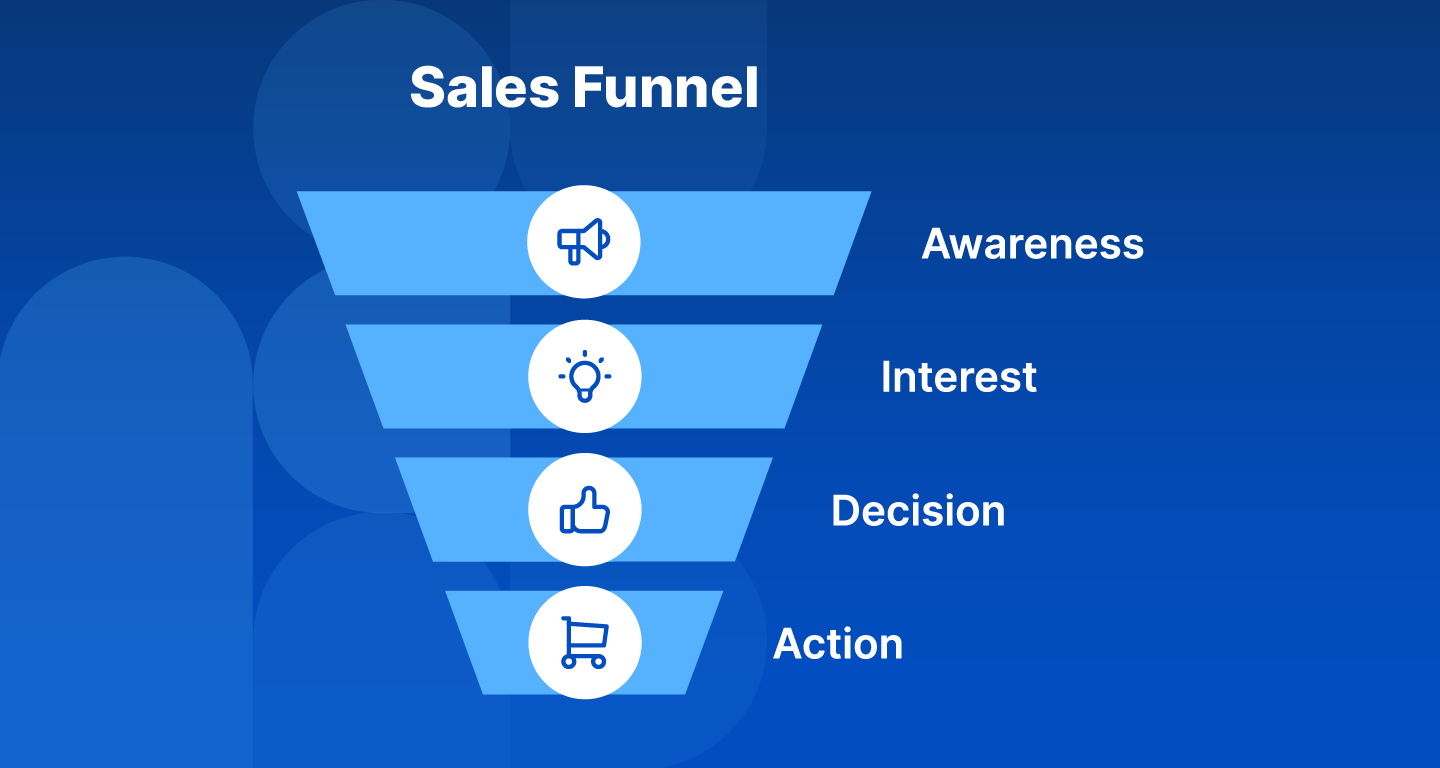
The typical sales funnel in B2B
Here’s what it looks like in real life:
Here’s what the B2B sales process looks like in real life:
Step 1: Prospecting
This is where you put on your detective hat. You research and find companies that could use your product or service. You look at things like their industry, size, and location. This phase also involves considering factors such as the decision-makers within these companies. Identify key decision-makers who make purchasing choices, whether it's the CEO, department head, or someone else.
When you’re prospecting, you can use sales prospecting tools, business directories, or social media to find clues. You may also want to read industry reports or look into their recent news or announcements. The goal is to make a list of companies and executives that seem like a good fit for what you offer.
Step 2: Outreach
Once you have your list of leads, it's time to take that first step and make your presence known. The goal is to start a conversation. Typically, you will initiate the conversation through cold calls or personalized messages on social media.
Your initial communication serves as an introduction, but it's more than just a simple "hello." Your message should highlight the common ground you share, like a shared interest you've discovered. This could be related to their industry trends, challenges they might be facing, or recent accomplishments they've achieved.
If they show curiosity or receptiveness, it paves the way for further discussions. Now you can ask to get on a call and start exploring how your solution aligns with their needs.
With Dealfront, you can drive GDPR-compliant prospecting using public data and on-demand access, ensuring privacy and future-proof outreach strategies.
Step 3: Discovery call
After scheduling a call or meeting, you now have an opportunity to have a more in-depth conversation. During the discovery call, don’t just ask surface-level questions. Instead, delve into the heart of the matter. Inquire about their pain points, their goals, and what they're looking for in a solution.
The discovery call is an opportunity to build rapport and gather crucial information. Listening carefully is key. Focus on gaining a deeper understanding of their situation. Your goal here is to determine whether your product or service is a good fit for their specific needs—and if it is, how to best sell it to them.
Step 4: Pitching
If you think your product can fulfill the prospect's needs, go ahead and pitch your product. Pitching is your moment to shine, like stepping into the spotlight on a stage. This is where you translate your understanding of their needs into a tailored solution. And as you deliver your pitch, you're not just listing benefits. You're painting a vivid picture of the positive impact your product or service can have on their business.
The ultimate goal of your pitch is to evoke excitement and enthusiasm. It's about sparking your lead’s imagination and showing them a future where their challenges are overcome and their goals are within reach. If you craft your pitch well, you will leave a lasting impact and set the stage for a positive decision.
Step 5: Objection handling
Your pitch may be stellar, but not everyone says "yes" right away. Sometimes they have concerns or doubts. These concerns could stem from uncertainties or perceived obstacles. Your role here is to be the reassuring guide, addressing their worries and paving the way for a confident decision. You not only acknowledge their worries but also demonstrate how your product or service directly addresses them.
This step involves empathy. This means you need to understand your prospect’s point of view. If you’ve been listening actively, you will be in a better position to respond effectively and move further along in the sales process. Also, handling objections is about instilling confidence. If you have success stories, data, and evidence that can substantiate your claims, this is the best time to use them.
Step 6: Closing the deal
If you’re successful in convincing your prospect (and we hope you are), now things get serious. You and your potential customer have to work together to determine pricing, deliverables, timelines, and other vital aspects. At this point, clarity is paramount, as both sides need to know exactly what they're committing to. Once everything is in order and both parties are in agreement, the deal is sealed.
Step 7: Customer care
But after the deal is closed, the journey continues with what is often referred to as the "post-sale" or "customer onboarding" phase. This is where the transition from prospect to client takes place. Now your focus shifts from sealing the deal to delivering on your promises and building a lasting relationship.
How to build a great sales team
You can use the newest, fanciest B2B sales platforms and tools on the market, but if you don’t have a strong sales team, your B2B sales growth is going to stall. Think of your sales team as the architects of your success.
They're the bridge between your product and potential clients, turning interest into action. And the difference between success and disappointment often boils down to the skills, knowledge, and attitude of your team.
So, let’s take a look at what it takes to build a great sales team.
What are the most vital salesperson traits?
When assembling your sales team, prioritize traits like active listening, empathy, and adaptability. Great B2B salespeople put themselves in the customer's shoes. They understand concerns, making the customer feel heard and valued. Look for people who listen well because they will respond thoughtfully and address customer needs effectively.
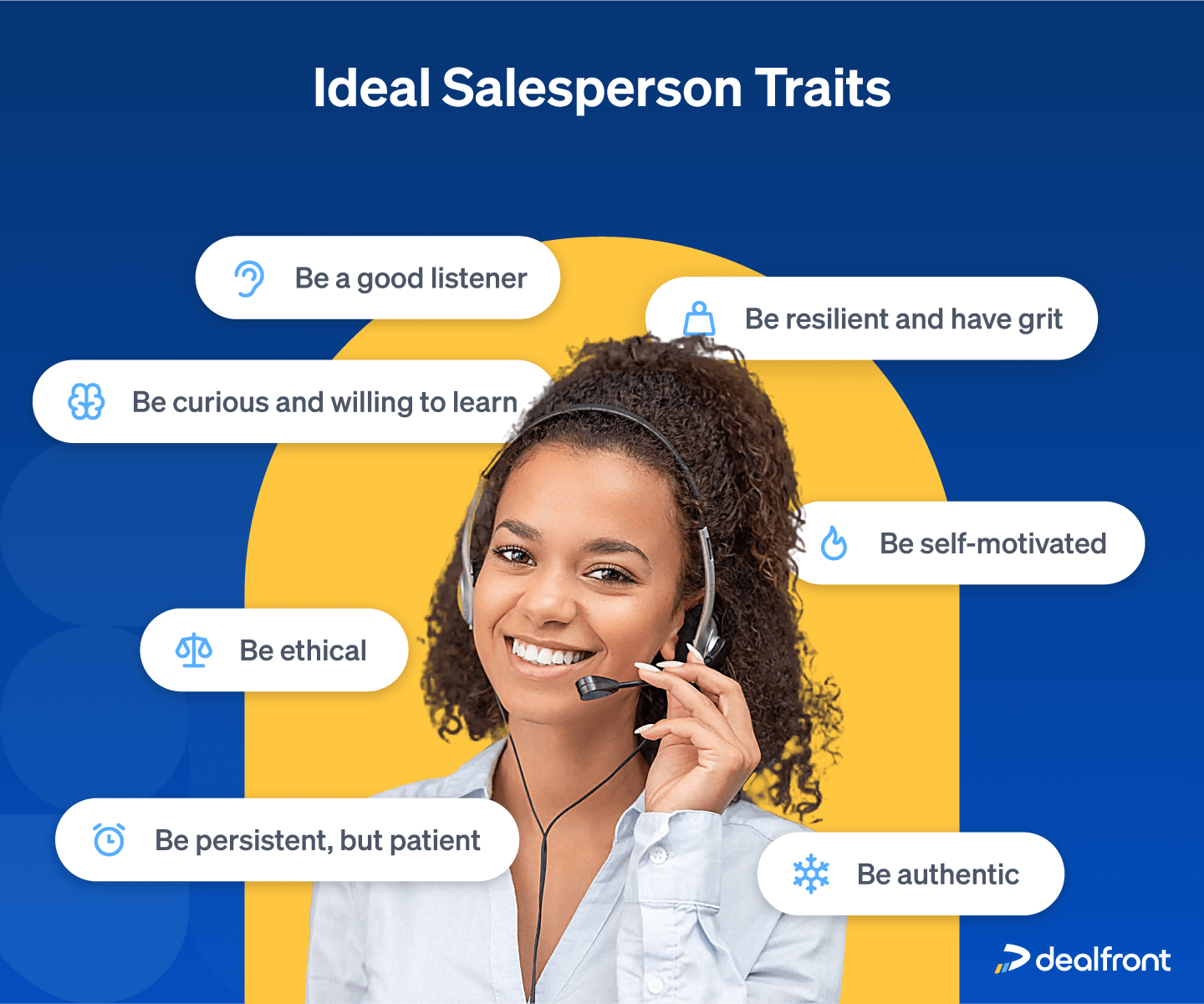
Traits of an ideal salesperson
Keeping in mind that the sales landscape changes, so you need salespeople who can switch gears, adjust their strategies to increase B2B sales, and stay ahead of market shifts. You also want to work with people who know how to negotiate. A good salesperson finds common ground during conversations with your clients, ensuring both parties feel satisfied with the deal.
Maintain high standards with ongoing training
After finding the right people to work with, you need to equip them with training that is tailored to your offering and market. Start by identifying areas where your team can improve. Assess their skills both individually and as a group to understand your training needs.
Craft training programs that address weaknesses and build on strengths. Combine workshops, webinars, role-playing, and e-learning to keep the process engaging. And speaking of engagement, encourage team members to share their expertise. This peer-to-peer learning fosters a collaborative environment and helps everyone improve.
To measure how effective your training is, simulate common sales situations. This practice allows your team to refine their skills around B2B sales services. Remember that training doesn't end after a single session. You will need to reinforce skills through consistent follow-ups and refreshers. Also, keep your team informed about industry trends and changes in order to position them as knowledgeable partners to your clients.
Cater to your market with localization
Localization is like speaking the language of your customers, both literally and figuratively. Sales reps who have native skills in the language of the target market can connect better and build trust more easily. It's about going beyond a one-size-fits-all approach and instead, tailoring your B2B sales strategies to speak directly to your customers in a way that resonates with them.
For instance, if you're selling software solutions to businesses in different countries, localization means adapting your product features, marketing materials, and even your sales pitch to align with the distinct needs and preferences of each country.
When you’re putting together a sales team, ensure they understand the specific business environment and practices of your target market. Ensure they are aware of industry norms, regulations, and the way business relationships are built.
Encourage your team to research the unique cultural norms and preferences of each market to avoid misunderstandings. Also, support them by tailoring your marketing materials to resonate with the leads they're working with. By doing this, you'll be formulating sales tactics unique to your business.
How to increase B2B sales with tactics that work
Sales tactics are about being prepared and strategic in your approach. They optimize your time, energy, and resources, increasing your chances of landing deals. Just as a craftsman needs the right tools to build, you need to use the right strategies to increase B2B sales by addressing client concerns and leading them toward a decision to buy. The following B2B sales tactics provide direction and structure to your sales efforts.
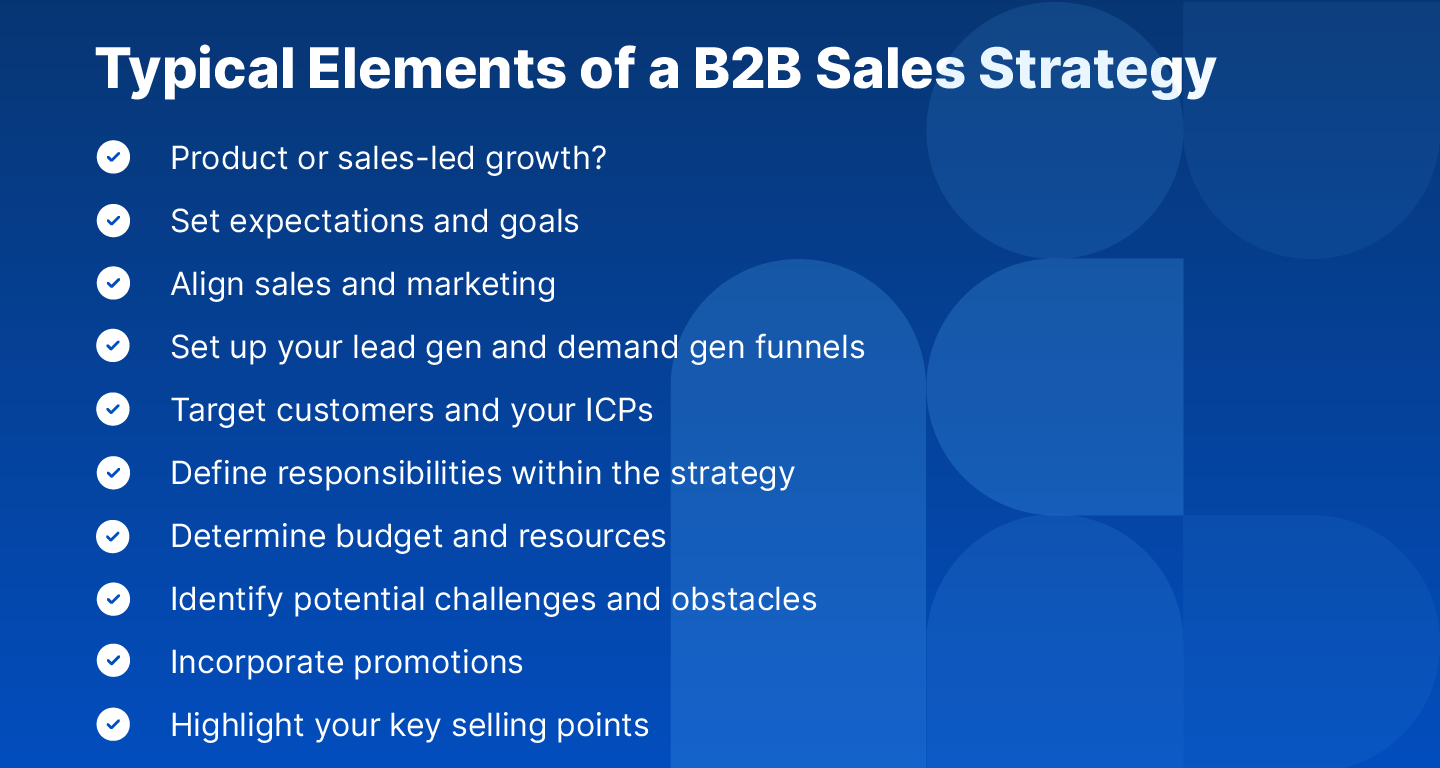
Align sales and marketing through account-based sales
ABS (account-based sales) allows you to focus your efforts on a select group of high-value targets, rather than casting a wide net. With ABS, your sales rep first identifies specific companies that are a perfect fit for your product or service.
Once you've chosen these targets, you tailor your sales and marketing efforts to them. You research their needs, challenges, and goals. Then you craft personalized messages and solutions that address their unique pain points.
But it’s worth mentioning that although ABS and Account-Based Marketing (ABM) are closely related, they’re different. While ABS is concerned with tailoring the sales process and engagement for individual accounts, ABM is focused on delivering personalized marketing content and campaigns. Its aim is to capture the attention and interest of specific target accounts.
They may have different focal points, but integrating both strategies can lead to a more effective and holistic approach to converting high-value accounts. Aligning B2B sales and marketing through account-based sales is like combining the skills of two experts to create a powerful B2B sales strategy. It means that your sales and marketing teams work closely together, sharing information and strategies to win over important clients.
Instead of working separately, they team up to focus on specific target accounts that have high potential. By doing this, they're like a tag team that combines their strengths to create a stronger impact. This approach ensures that both teams are on the same page and working towards the same goal, which is to land those key clients.
Create compelling content
Just as a skilled storyteller captures their audience's attention, compelling content captures the interest of potential clients. It should be relevant and informative. And it's not about pushing your product but rather about providing value.
Focus on delivering insights that resonate deeply with their challenges. This tactic starts with understanding your audience's pain points. By researching their industry, challenges, and goals, you're able to create content that speaks directly to them.
Actually, 87% of B2B buyers say that online content significantly influences their choice of vendors. With the help of your marketing team, create content that makes it easier for salespeople to work. If you have testimonials, use them. Also create case studies to give your clients a little bit of context.
This content serves as a guiding light, showing them how your product or service can be the solution they're seeking. Compelling content also demonstrates your expertise and thought leadership. When you share valuable insights, whether through blog posts, whitepapers, or videos, you position yourself as a trusted advisor. This trust forms the foundation for building strong relationships in B2B sales.
Convert cold leads into brand evangelists with social selling
It's also a good move to add a personal touch to your B2B sales efforts by building customer relationships and trust on social media platforms. Engage with potential clients on platforms like LinkedIn, X (formerly known as Twitter), or Instagram. It’s called social selling. Start by commenting on their posts, sharing relevant content, and starting meaningful conversations, you can create a genuine rapport.
Focus on being helpful and insightful, providing B2B sales support rather than just pushing your products. Imagine you're giving advice to a friend. Over time, as you consistently provide value and engage in meaningful conversations, these cold leads will warm up to your brand.
As these leads become more engaged, they become your advocates. They'll start sharing your content, referring others to you, and considering your offerings when the time is right.
Get it right with B2B sales best practices
B2B sales best practices are a collection of proven strategies and approaches that have been refined over time. They are the result of learning from past successes and failures. By adhering to these practices, you're setting yourself up for several key advantages.
First, they help you navigate through the complexities of the B2B sales process, ensuring you're on the right track. Second, they enhance your credibility. Clients value professionalism and expertise, and when you consistently apply proven methods, you demonstrate your commitment to their success.
Lastly, B2B sales best practices keep you adaptable. They're not rigid rules, but rather guidelines that can be adjusted to suit different situations. By mastering the following practices, you'll be equipped to handle challenges that arise in the ever-evolving business landscape.
1. Prioritize the needs of your customers
Place the customer at the heart of your B2B sales strategy. Understand their needs, challenges, and goals to tailor your approach accordingly. Just as a good friend listens attentively, practice active listening with clients. Then, only offer solutions that fit your customer's specific needs. One-size-fits-all approaches rarely work in B2B sales.
As you seek to personalize your interactions, strive to underpromise and overdeliver. Also, encourage a feedback loop to create an open channel for client input as well as a way to deliver ongoing B2B sales support. It will lead to continuous improvement and help you adapt to changing needs.
2. Identify the best tools to use
You'll also need to use the right B2B sales platform to manage leads, track interactions, and stay organized while engaging potential customers. Some essential B2B sales tools include:
Customer relationship management (CRM) systems: To keep all client information in one place for easy access
Email marketing platforms: To help you with personalized communication
Sales engagement platforms: To automate follow-ups and outreach
Analytics tools: To provide insights into client behavior, which aids in decision-making
But if you’re looking for a real game-changer, Dealfront empowers sales and marketing teams by providing them with important information, tools, and insights. Our B2B sales platform offers a big-picture view and lets you know when a company you're interested in visits your website.
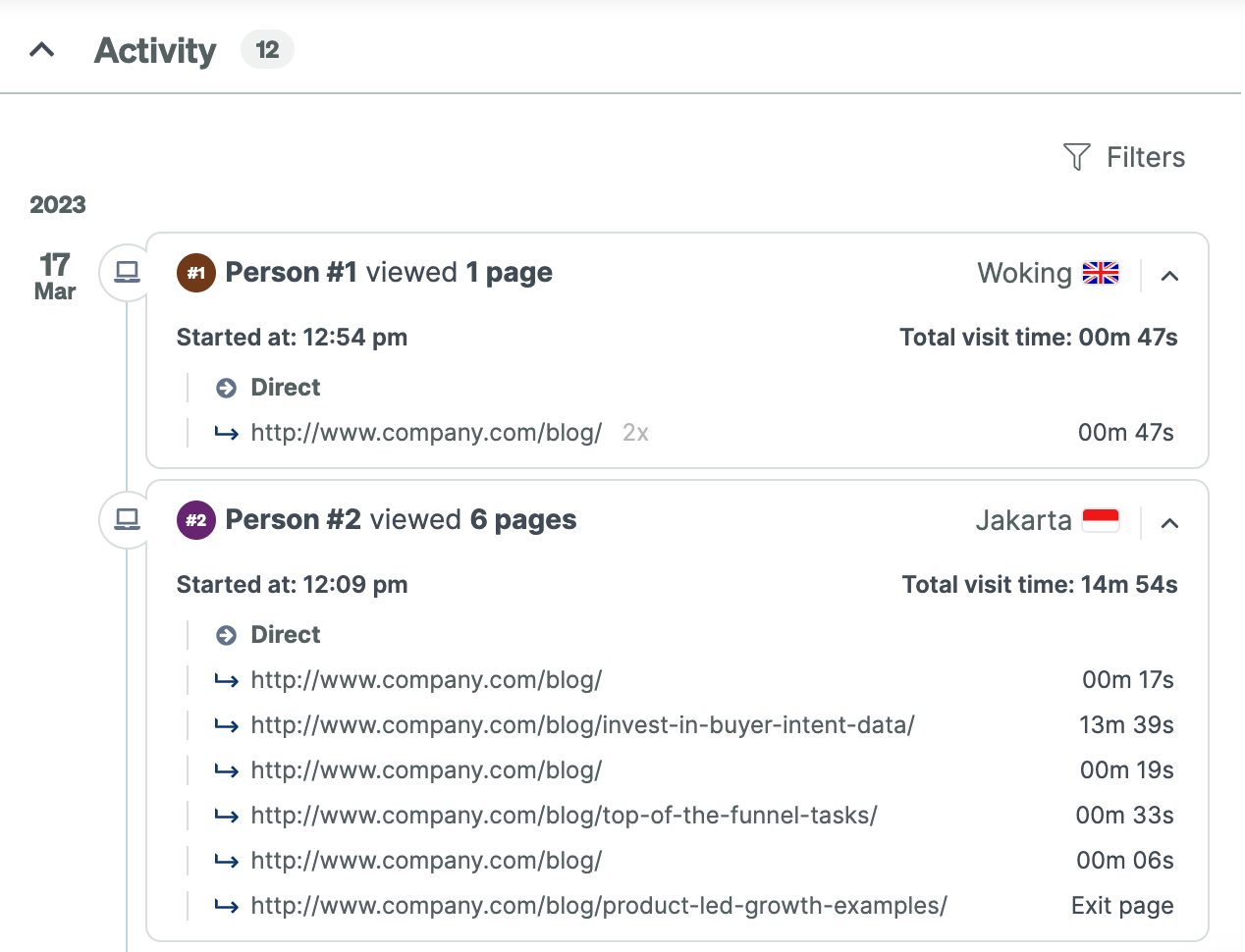
See which companies visited your website with Dealfront
Dealfront gets its power from its GDPR-compliant data. It uses machine learning to help you focus on companies that are truly interested in buying what you're selling. It can even help you find more companies to target.
3. Equip your sales team
First off, encourage collaboration among team members. Create a space where everyone can share their insights, strategies, and successes. This kind of teamwork strengthens the overall performance of the group.
Make sure that everyone knows their roles and goals clearly. This way, they understand exactly what they're responsible for, which helps them contribute effectively to the team's goals. Assign specific people to handle B2B sales leads. Let everyone know who's responsible for what so that no opportunities fall through the cracks.
Most importantly, use data to your advantage. Use a tool like Dealfront to look at trends and B2B sales metrics so that you can fine-tune your strategies for better results. And remember, the market is always changing! Your team needs to be adaptable and ready to adjust strategies when needed.
Lastly, give credit where it's due. When you acknowledge contributions, it’s easy to boost morale and motivate the team to keep up the good work. Support your team because a supportive environment can be all they need to thrive.
Keep winning with the best B2B sales solutions
Success in B2B sales hinges on three vital pillars: understanding, strategy, and collaboration. When assembling an exceptional sales team, prioritize qualities like active listening, empathy, adaptability, and strong negotiation skills. From harmonizing marketing and sales strategies to crafting engaging content, B2B sales tactics shape your approach and lay the groundwork for success.
Remember that each interaction in your B2B sales journey is a step towards building partnerships, overcoming challenges, and reaching shared goals. By embracing these core concepts, tactics, and practices, you'll be fully equipped to take your business to new heights.
FAQ
What is the meaning of B2B sales?
What is the meaning of B2B sales?
B2B sales stands for business-to-business sales. It refers to companies that sell goods and services to other businesses rather than consumers. This can include heavy machinery manufacturers, office equipment suppliers, software developers, or specialized service providers.
How to do B2B sales?
How to do B2B sales?
Because of the longer sales cycles and higher order values typical of B2B sales, the key to success is understanding your prospective clients’ needs and building strong relationships where you demonstrate how you will meet those needs. This can involve prospecting, pitching, and nurturing your leads. The seven B2B sales process steps that Dealfront follows are prospecting, outreach, discovery, pitching, objections, closing, and support.
How to improve B2B sales?
How to improve B2B sales?
For successful B2B sales, nothing beats understanding your audience. However, you can strengthen your chances by building a strong sales team as well as by using a B2B sales platform to optimize your sales process and gain insights from data and analytics.
How can B2B sales metrics be used to understand ROI?
How can B2B sales metrics be used to understand ROI?
Tracking B2B sales metrics like customer acquisition cost (CAC), lead-to-customer conversion rate, customer lifetime value (CLV), and sales expenses will allow you to calculate sales efficiency, revenue generation, and return on investment (ROI).

